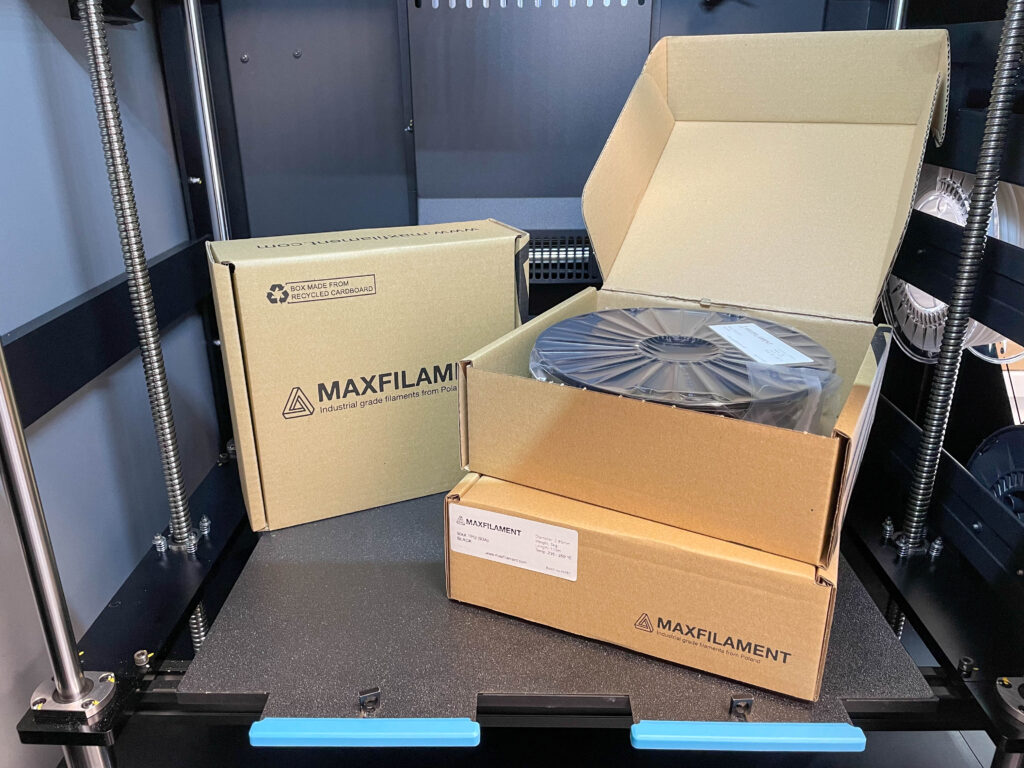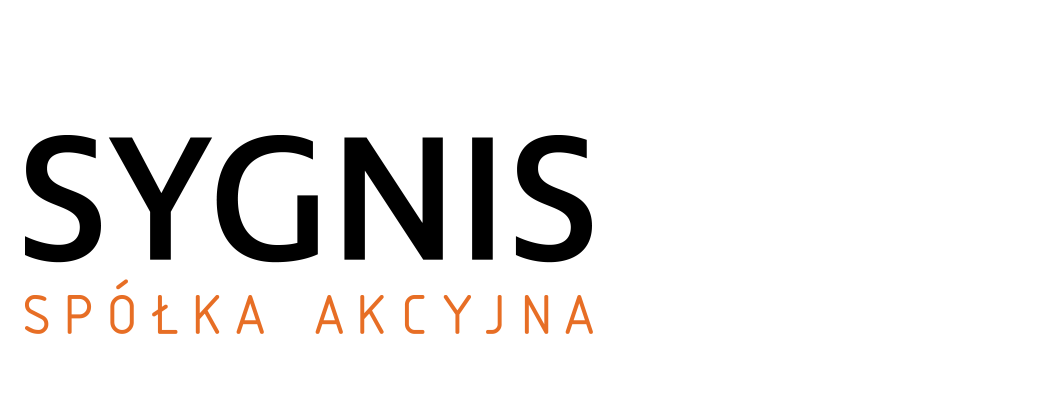In cooperation with partners from Maxfilament, material tests have been carried out on our latest 3D printers from FlashForge – Creator 4 – to verify the quality and other processing parameters of industrial materials. Want to find out how they performed in battle and where the idea for the collaboration came from? Well, let’s read on!
Okay, right away – from the beginning
The first talks about Maxfilament’s cooperation in materials testing emerged at last year’s Formnext trade fairs in Frankfurt am Main. For those who don’t already know, this is the largest global trade fair for additive technologies. Two, huge, three-story halls, a total of 606 exhibitors (before the pandemic there were more than 800!), almost 18,000 visitors (similarly, before the pandemic – more than 34,000!), and all just about 3D printing. Nice traffic, a bit like a Slavic market. You could find everything there, literally everything – from FDM technology through SLS, fabrication from materials such as metal, glass, sand, material manufacturers, machine manufacturers, service providers, to media specializing in news about additive technologies. We also found time to talk to representatives of Maxfilament, a Polish company that produces and distributes professional materials for industry and service offices. Our cooperation arrangements consisted of joint technical tests of the machine, as well as tests of industrial materials.

Fast forward to July 2022
At the end of July this year, the first FlashForge Creators 4 arrived as an addition to our machine park. On July 22 to be exact, one Creator 4 machine arrived at Maxfilament HQ in Poznan, where its implementation and training of the team on site was handled by our 3D printing specialists Mateusz Lenart and Piotr Piskorski. We delivered the 3D printer with all available modules and interchangeable extruders to enable the most efficient testing.
>>> You can read more about the delivery of the latest Creators 4 here!

Together, we selected an initial package of materials for testing, consisting of the industry’s most necessary 3D printing materials. The materials selected for testing were: MAX Carbon PA12; Max PA6; MAX Smart ABS; MAX ASA; MAX TPU 93A; MAX HIPS. The specialists at Maxfilament adjusted the appropriate printing parameters for the above filaments and began testing.
The situation was ideal for us, because we got our hands on a fresh machine that we knew little about. We were able to test it from scratch, stress test it, push it to its limits and see how it would handle our industrial materials. The result? We are very positively surprised! – says Marek Starow, sales director at Maxfilament.

Briefly about the materials themselves – which filaments did we test?
| MAX CARBON PA12 – with chopped carbon fiber | – Resistant to high temperatures, low shrinkage – High abrasion resistance, high impact strength – For machine parts operating at high temperatures |
| MAX PA6 | – Heat resistant, easy to print – Chemical resistance, high tensile strength – For machine parts operating under harsh conditions |
| MAX SMART ABS | – Simplification of printing parameters – Production of large models without risk of distortion – Properties of ABS |

| MAX ASA | – Resistant to UV radiation and water – Characterized by rigidity, thermal stability, high chemical resistance – Parts exposed to atmospheric phenomena |
| MAX TPU 93A | – Achieves hardness of up to 93A on the Shore scale – Resistant to chemicals such as oils and acids – Components exposed to harsh conditions |
| MAX HIPS | – As a support material for ABS, ASA, PA6 – Can be dissolved with limonene acid – Model material with matte finish |

Did Creator 4 pass all the tests?
The tests ended not only with a full internal report, but most importantly with the creation of six material profiles for 3D printing on the Creator 4 printer! Profiles were made for MAX ABS, MAX ASA, MAX TPU93A, MAX PA6, MAX CARBON PA12, as well as MAX HIPS as a support material for such filaments as ABS, ASA and PA6. All profiles can be manually imported into the FlashPrint slicer for the time being and freely 3D print from Maxfilament materials, achieving the highest quality prints. Each customer receives a package with parameters to be uploaded to FlashPrint software, and at the next software update this package will be added by the manufacturer – in the software it will already be possible to select the above-mentioned materials without any additional steps.
Due to good communication and efficient cooperation between Sygnis and Maxfilament during the first material tests, profiles are now being created for MAX ABS ARAMID (ABS reinforced with aramid fiber), MAX PET-G ESD (static dissipative), MAX PET-G FR (non-flammable V0) materials, also very useful in industrial manufacturing. A brief summary of material properties below:
| MAX PET-G FR | – Flame retardant material – Has very low processing shrinkage, does not absorb water – Easy to print |
| MAX PET-G ESD | – Disperses electrostatic charges – High strength and resistance to weak acids, alcohols, oils and gasoline – Electronic components, easy to print |
| MAX ABS ARAMID | – High quality ABS reinforced with Aramid fiber – Low shrinkage, easy to print – For high strength parts and final parts |

Creator 4 – a machine for all sorts of tasks
The Flashforge Creator 4 printer handled the new materials brilliantly! But – you don’t have to take my word for it. Let’s better listen to what the specialists from Maxfilament, who conducted the tests, have to say.
The FlashForge Creator 4 machine is characterized by a very high repeatability and reliability of printing, making it great for industrial materials. Also noteworthy is its ability to print from MAX TPU 93A (and more broadly, from various types of flex materials), from Carbon (MAX CARBON PA12), as well as from ABS and ASA materials. High-quality linear guides on the X and Y axes, as well as a ball screw on the Z axis, ensure extremely high dimensional accuracy. The 3D printer works well with demanding materials such as MAX TPU 93A and MAX CARBON PA12. Against the competition, this is a very strong differentiator, as the machine performs well with Carbon and Flex.
The 3D printer is safe and easy to use. The heated chamber allows printing from industrial-grade materials without worrying about deformation due to possible shrinkage. Besides, the 3D prints are devoid of internal stresses and feature better cohesiveness of layers, which translates into more durable prints.
FlashPrint 5 software allows you to easily manage 3D printing processes. With it, we can adjust both the most important printing parameters (such as speed or temperature) and the more advanced ones (such as smoothing top surfaces, editing supports or dimensional compensation). The dryer included in the accessories provides us with a handy store of ready-to-use materials and will also prove useful for polyamide materials. To operate the dryer, we have available built-in programs for drying at elevated temperatures and then maintaining low humidity. Add to that easily replaceable extruders dedicated to specific groups of plastics, the ability to “queue” prints in the printer’s menu, and magnetically attached spring-steel work platforms that make it easy to pull off finished prints, and you get a truly reliable machine that performs perfectly in a variety of conditions and types of jobs – says Marek Starow, sales director at Maxfilament.

Is that it?
Not at all! Our cooperation does not end here. On the contrary, we’ve just started to get off the ground. We are holding regular meetings to discuss the experiences of Sygnis and Maxfilament customers regarding the use of materials for production. This will enable us to provide customers with ready-made solutions for the FlashForge Creator 4 machine to work with a specific material. Besides, the FlashPrint 5 software already has uploaded shrinkage parameters for each material from Maxfilament and automatically scales the models, making a correction for material shrinkage!
>>> Do you want to learn about our other realizations? Read: [CASE STUDY] 3D printing to help newborns
Besides, together with Maxfilament, we will present our solutions at the upcoming Formnext 2022 trade show! In just one week, from November 15 to 18, you will be able to meet us at booth F43 in Hall 11.1.
At the FlashForge Poland by Sygnis booth, we will present the latest machines from FlashForge, and Maxfilament specialists will show exceptional 3D printing materials, as well as examples of 3D prints, including those created on Creator 4! You are cordially invited to make an appointment with us!








